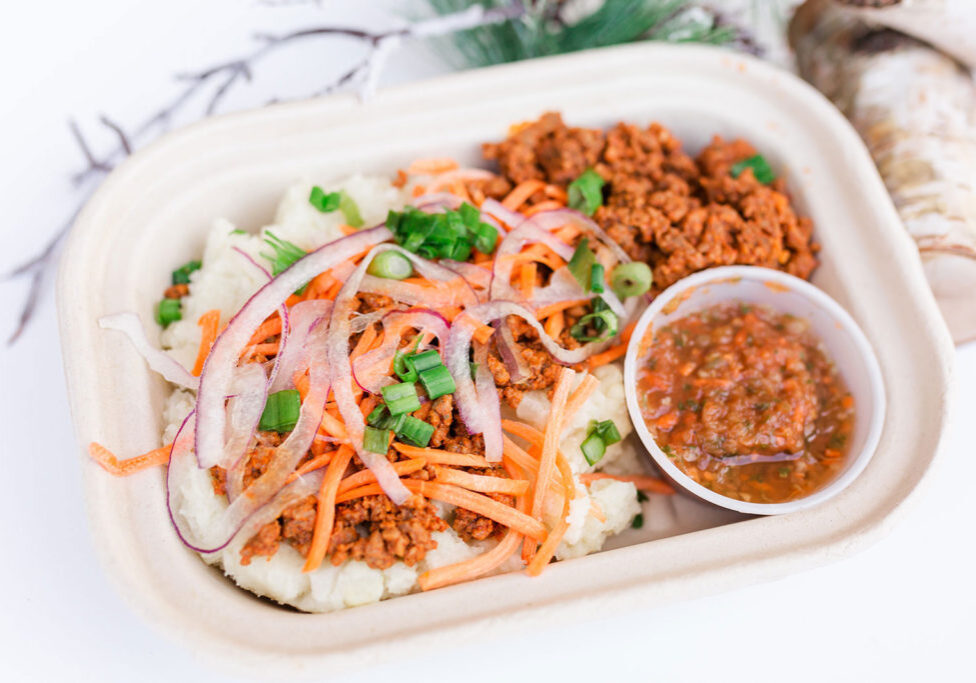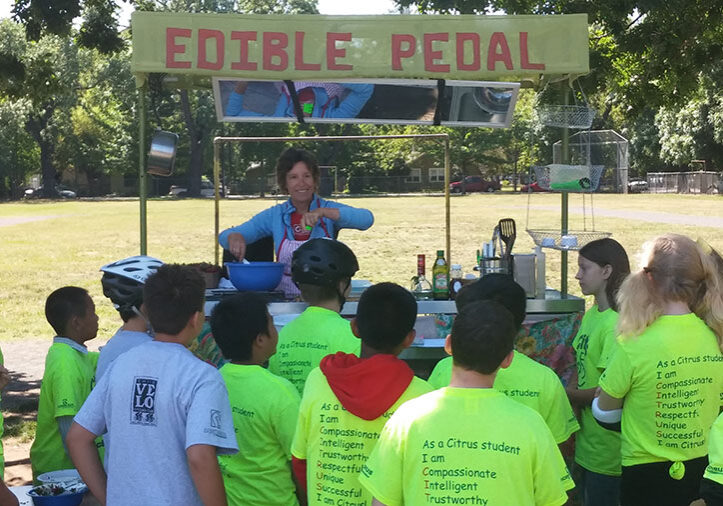 Good eating habits begin at home. Choosing mindfully what you feed your family, making healthier choices when eating out, and partnering with your child’s school are several important ways you can guide your child to nutritional food choices.
Good eating habits begin at home. Choosing mindfully what you feed your family, making healthier choices when eating out, and partnering with your child’s school are several important ways you can guide your child to nutritional food choices.
Make Healthy Choices at Home
Balancing the ratio of meals made from prepackaged foods with those made from fresh foods is essential to establishing nutritious eating habits. Understanding food labels on the prepackaged items you do buy can help you eliminate excess fat and sugar from your family’s diet.
“The first place to start when you look at the nutrition facts label is the serving size and the number of servings in the package,” says Concepcion Mendoza, Nutrition Family and Consumer Science Advisor at the University of California Cooperative Extension (UCCE). Since the calories and other nutrient amounts listed are relevant to serving size, portion control is critical to eating only the recommended daily values.
Knowing how to translate nutrients into understandable measurements is useful for both parents and children and can be done with a simple calculation: dividing the number of grams in a food item by four will provide its teaspoon equivalent. For example, a 12-oz. can of soda contains 41 grams, or 10 teaspoons, of sugar.
Educating and involving your children in their food choices is also important. Redding Parent Rachelle Schaden says her family’s focus is on reducing sugar consumption among her three daughters. “When it comes to desserts, we try to be creative,” she says. “We choose things that are easy so the kids can be part of making their own dessert, which they like even more.” She says some of their favorites include chocolate dipped strawberries, frozen banana pops, and apples with a cinnamon-yogurt dip.
Making homemade lunches, using less sugar in homemade recipes, and doing away with concentrated juice drinks are all strategies that Schaden’s family has used effectively. She admits, “If we go to a party, my daughter will have a piece of cake or one or two pieces of candy, but there are limits.”
Choose Healthier Options When Eating Out
For most families, eliminating eating out would be unappealing and probably impractical. Sharre Whitson, a Nutrition Educator with UCCE, offers parents five tips for making healthier choices when eating away from home.
- “Read the nutrition facts sheet” says Whitson. “Most restaurants and all fast food chains are required to post calories on the menu and make detailed nutritional facts sheets available to consumers.”
- Whitson recommends requesting sauces or dressings on the side so you can control how much is added to your child’s meal.
- Order grilled rather than fried foods. Besides containing less fat, grilled foods retain more of their nutritional value due to their shorter cooking time.
- Don’t supersize! A standard drink serving is eight ounces and a standard meat serving is three ounces. If you do get a larger order, split it or take it home in a doggie bag.
- Choose water, regular milk or natural juice (no sugar added) rather than soda or flavored milk, which contain added sweeteners and empty calories.
Partner With Your Child’s School
When it comes to school menus, parents in small rural communities can and do exert influence. Indian Springs Elementary School in Big Bend is a case in point. Food Service Director Don McKinney says he uses locally grown organic beef because parents rejected the school’s use of beef commodities.
Jeanne Utterback, Principal of Fall River Mills Junior/Senior High School, has taken a different approach. She says, “We’ve established collaborative relationships with local business owners, who are also parents of students, to ensure they offer options like sandwiches or healthy burritos rather than fried foods.” She also struck an agreement with a burger place near campus not to sell energy drinks to students.
Utterback says the school also has purchased a healthy snack machine, a convenience for kids involved in extra-curricular activities. Popular items include trail mix, baked chips, pretzels and organic health food bars, items that all fall within nutritional guidelines for schools.
Rural schools, however, aren’t the only ones where parents can make their presence and preference known. School gardens are becoming increasingly popular at schools within city limits, the harvests of which end up on school salad bars and in other school meals.
While volunteers from the Shasta College Master Gardner Program will work with schools to teach them what to plant and how to grow and harvest it, Master Gardner volunteer Steve Ganger says, “It’s the parent volunteers who really spearhead and direct the on-going management of a school garden.”
Parents have a tremendous influence on what their children eat, particularly when they’re younger. Nutritious eating really is a family affair; whether at home or away, parents can educate and involve their children in making the healthiest choices.
Posted in: Health & Nutrition
Comment Policy: All viewpoints are welcome, but comments should remain relevant. Personal attacks, profanity, and aggressive behavior are not allowed. No spam, advertising, or promoting of products/services. Please, only use your real name and limit the amount of links submitted in your comment.
Comments
Leave a Reply
You Might Also Like...

Your Kids’ Cereal – Part of a Nutritious Breakfast? Nah.
I am old enough to remember when Honey Smacks cereal was called Sugar Smacks. So it’s no surprise to me that a serving of the cereal has more sugar than a […]

Not Just for Taco Tuesday – Salsas Spice Up Any Day
As a staple on most tables for Taco Tuesdays, salsa is one of my favorite condiments. The blend of peppers, spices and tomatoes, with just the right amount of heat […]

Bike Kitchen Peddles Good Nutrition
Looking for new ideas for preparing healthy foods? Keep an eye out for a pedal-driven kitchen at local farmers markets and community events in Chico. Called the Edible Pedal, the […]

The Well Stocked Pantry for a Successful Cooking Experience
The secret to being a good home cook is having a well-stocked pantry. This doesn’t mean having everything under the sun in your pantry (and never using half of it). […]



Lori Coker says
Dear Claudia,
What a great article and so true. Feeding childern is so basic that all it takes is a little extra time to plan in the beginning on the day that families have the most time. After that it will finally become second nature to provide healthy, fun and flavorful family meals.
Thank you,
Lori Coker, Nutrition Educator
University of California Cooperative Extension
CalFresh Nutrtion Education Program